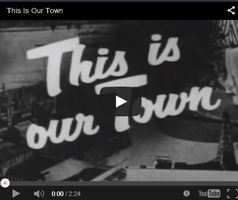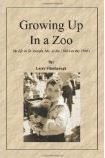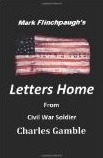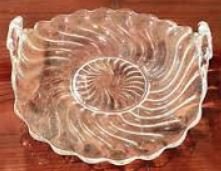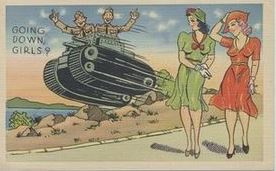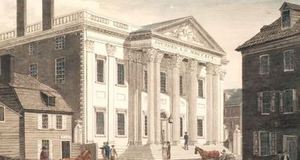Ham Radio
CQ CQ CQ DE WØRX0
Wireless Communications History Supernatural Phenomenon or Scientific Marvel
Note: Click on first slide to start Slide Presentation. Click on new slide and use fwd or reverse arrows to advance or go back.
Comments
* Amateur Radio Call Directory- St. Joseph, Mo. Area August 5, 2016
Alphabetical By Call Letters:
| AAØBW | White | Bob |
| AAØML | Holmes | Wayne |
| KAØIKS | Makawski | Carlene |
| KAØPXR | Kew | Margaret |
| KAØPXS | Kew | Lewis |
| KAØSIU | Burtnett | Roy |
| KAØSSN | Fleshman | Dean |
| KB5GXD | Llana | Angelo |
| KBØALL | Dobbins | John |
| KBØBBZ | Farmer | Denton |
| KBØGSK | Clark | Sean |
| KBØLSM | Hurd | Brad |
| KBØOGF | Steele | Bill |
| KBØSSZ | White | Carol |
| KBØUTC | Farmer | Bob |
| KBØVDT | Deweese | Martha |
| KBØVQH | Farmer | Jeanie |
| KBØWOJ | Reynolds | Neil |
| KBØZFR | McDermott | Mary |
| KCØANA | Watson | John |
| KCØDRB | Shelton | Margaret |
| KCØEKB | Hoffman | James |
| KCØEOR | Hale | Darren |
| KCØEWF | West | Jesse |
| KCØFZF | Hollie | Thomas |
| KCØGP | Pease | George |
| KCØGZG | Bowser | Paul |
| KCØMPY | Jones | David |
| KCØPSS | Revels | Wesley |
| KCØRRZ | Burdick | Helen |
| KCØRUQ | Mollus | Adam |
| KCØTHK | SCHUSSLER | Leonard |
| KCØUDH | Martin | Tom |
| KCØZJD | Miller | Jeff |
| KDØKKN | Conant | James |
| KDØKKO | Conant | Marsha |
| KDØTQI | Mull | Dennis |
| KEØFEZ | Flinchpaugh | Phyllis |
| KEØHDO | Jones | Darrell |
| KEØHTE | Wallace | Sandra |
| KEØIMU | Greever | Travis |
| KFØH | Clark | Al |
| KGØZR | Baublit | Monty |
| KMØZ | Sutton | Douglas |
| KØROX | Nash | Bob |
| NBØZ | Kew | James |
| NIØR | Heard | Roger |
| NØEQL | Morelock | Jim |
| NØIID | Maag | Alan |
| NØLRD | Farmer | Dwan |
| NØQFC | Shelton | Ed |
| NØRFK | Simpson | Kelly |
| NØYXG | Bowser | John |
| NØZKH | Bowser | Charlotte |
| NØZQU | Davis | Vic |
| W0UH | Maccoux | Jerry |
| WAØNWV | Schott | Leo |
| WBØFLF | Barnett | Glenn |
| WBØHNO | Makawski | Neal |
| WBØVRA | Winkler | John |
| WBØW | Pearson | Gaylen |
| WBØZLO | Winkler | Cathy |
| WDØBBL | Mollus | Janet |
| WDØBBR | Northcutt | Jessie |
| WDØBC | Coverdell | Bill |
| WØLAV | Shanks | Charles |
| WØNMD | Winkleman | Dan |
| WØRXO | Flinchpaugh | Larry |
| WØYZZ | Mollus | Dave |
Alphabetical by name
| WBØFLF | Barnett | Glenn |
| KGØZR | Baublit | Monty |
| KCØGZG | Bowser | Paul |
| NØYXG | Bowser | John |
| NØZKH | Bowser | Charlotte |
| KCØRRZ | Burdick | Helen |
| KAØSIU | Burtnett | Roy |
| KBØGSK | Clark | Sean |
| KFØH | Clark | Al |
| KDØKKN | Conant | James |
| KDØKKO | Conant | Marsha |
| WDØBC | Coverdell | Bill |
| NØZQU | Davis | Vic |
| KBØVDT | Deweese | Martha |
| KBØALL | Dobbins | John |
| KBØBBZ | Farmer | Denton |
| KBØUTC | Farmer | Bob |
| KBØVQH | Farmer | Jeanie |
| NØLRD | Farmer | Dwan |
| KAØSSN | Fleshman | Dean |
| KEØFEZ | Flinchpaugh | Phyllis |
| WØRXO | Flinchpaugh | Larry |
| KEØIMU | Greever | Travis |
| KCØEOR | Hale | Darren |
| NIØR | Heard | Roger |
| KCØEKB | Hoffman | James |
| KCØFZF | Hollie | Thomas |
| AAØML | Holmes | Wayne |
| KBØLSM | Hurd | Brad |
| KCØMPY | Jones | David |
| KEØHDO | Jones | Darrell |
| KAØPXR | Kew | Margaret |
| KAØPXS | Kew | Lewis |
| NBØZ | Kew | James |
| KB5GXD | Llana | Angelo |
| NØIID | Maag | Alan |
| W0UH | Maccoux | Jerry |
| KAØIKS | Makawski | Carlene |
| WBØHNO | Makawski | Neal |
| KCØUDH | Martin | Tom |
| KBØZFR | McDermott | Mary |
| KCØZJD | Miller | Jeff |
| KCØRUQ | Mollus | Adam |
| WDØBBL | Mollus | Janet |
| WØYZZ | Mollus | Dave |
| NØEQL | Morelock | Jim |
| KDØTQI | Mull | Dennis |
| KØROX | Nash | Bob |
| WDØBBR | Northcutt | Jessie |
| WBØW | Pearson | Gaylen |
| KCØGP | Pease | George |
| KCØPSS | Revels | Wesley |
| KBØWOJ | Reynolds | Neil |
| WAØNWV | Schott | Leo |
| KCØTHK | SCHUSSLER | Leonard |
| WØLAV | Shanks | Charles |
| KCØDRB | Shelton | Margaret |
| NØQFC | Shelton | Ed |
| NØRFK | Simpson | Kelly |
| KBØOGF | Steele | Bill |
| KMØZ | Sutton | Douglas |
| KEØHTE | Wallace | Sandra |
| KCØANA | Watson | John |
| KCØEWF | West | Jesse |
| AAØBW | White | Bob |
| KBØSSZ | White | Carol |
| WØNMD | Winkleman | Dan |
| WBØVRA | Winkler | John |
| WBØZLO | Winkler | Cathy |
* Note: For an expanded Excel copy with addresses, phone numbers and email addresses, send request to lflinch@stjoelive.com
Red Cross Com Center
401 North 12th
St. Joseph, Mo.
Buchanan County Emergency Radio Communication System
WØNH
US Amateur radio Bands
Click on chart above to show ARRL chart link.
RadioGram
Click on image above for ARRL link.
National Traffic System (NTS) Training Manual
By R. Bruce Winchell, N8UT
Copyright 1997
Permission is hereby granted for non-profit reproduction of this material provided this statement is included and the material is used in its' entirety, or properly credited by same, if used in
part.
PURPOSE OF THIS MANUAL
Whenever the Authors have attended a class on the NTS, the instructor managed to "lose" 90% of his students in the first ten minutes. They simply go into too much detail. The NTS is not a difficult service to understand. There are, unfortunately, a lot of little details concerning the Radiogram forms. Most instructors get side-tracked by these details. They drone on and on about details and their students feel overwhelmed. The students seldom become involved in the NTS. They have been led to feel that there is too much to absorb.
We have addressed the need to keep it simple. A definite attempt has been made to apply the KISS (Keep It Simple, Stupid!) principle to the main text of this manual.. Some of the manual contents were left in Outline format so that different concepts and statement relationships can be very clearly understood. A set of Appendixes furnish the details on various topics . . . not the main text.
The purpose of this manual is to provide a simple teaching tool for you to use in learning about the National Traffic System (NTS)
PREFACE
by John Freeman, KB8ZDX
The National Traffic System (NTS) seems, to a lot of operators, to be this big, huge, complex operation that is very difficult to understand. Some of you may feel that you have to be an Extra with 20 years experience as a Ham to get involved in NTS because its all done on the HF bands and they use a language . . . so different that you need 20 years of just listening to understand it. WRONG!!
After going over this material, you will understand that it is not complicated or difficult to be involved in the NTS. Its' members are operators just like yourself. You do not have to hold an Extra, Advanced, or General License. There is a place for everyone in the NTS. These materials are designed to teach you not only how to get involved, but how to be effective once you do get involved.
This subject will be broken down simply.As you go through the manual, it will become more complex only because we put most of the details at the end. If you start at the beginning and work your way through, you will have absorbed enough simple background information to make sense out of the rest.
The most important part of the NTS and this manual, is the part that the authors cannot include.That part is you. This manual means nothing unless you use it to improve yourself and your operating skills. We welcome the opportunity to help you do that.
For a complete manuel, copy and paste the following into your browzer:
Ham Frequencies
146.520 MHZ 2 meter simplex
446.000MHZ 70 CM UHF Simplex
Emergency Generator Available at the Red Cross Building
St. Joseph Repeaters
146.850 MHZ Output freq./146.250 MHZ input freq. PL Tone 100 (WØNH 2 meter Ham Repeater)
This repeater antenna is mounted on the KQTV tower in St. Joseph, Mo. Note: No generator or battery backup.
The 444.925 repeater (Node 7894) PL Tone 100. It is linked to a system that includes St. Joseph, Rockport, Maryville, Chillicothe and Marline in Missouri. It also is has repeaters in Kansas which include, Leavenworth, Hiawatha, and Topeka.
Missouri Highway Patrol Troop H
443.950 MHZ Node 7038. Output freq./448.950 MHZ input freq. PL Tone 151.400 KMØHP
This repeater is now linked into the system that runs from Nebraska to northern Arkansas (the Central Region Intertie System) The node ID codes are now freely distributed. The standard codes are just the 4-digit node number to call a node, and "73" to disconnect. Node lists: http://www.irlp.net/ Click on “Active Node Status.”
The following is a recommended procedure for IRLP linking. An 8-minute video tutorial can also be found on youtube at https://www.youtube.com/watch?v=hGySkr3MtNc
1. After listening to verify the repeater isn't in use, announce your call and intention to use IRLP.
2. Transmit the DTMF digits 7 3 You should hear the repeater announce the closing of the Central Region Intertie system.
3. Once the repeater drops, transmit the four digit DTMF code of the IRLP site to which you want to connect. The worldwide list can be found at: http://status.irlp.net/index.php?PSTART=5 You can tell from this list whether your destination node is in use or out of service. If the status has a 4 digit number in that field it is connected to another node and not available for your use. Look for one with status IDLE.
4. Once you unkey and after a brief pause, you'll hear the repeater announce that you have connected to the desired IRLP node.
5. The next step is to do nothing --- wait and listen for up to fifteen seconds --- to make sure no one is using the destination node. If you hear no activity you can then announce your presence. According to the IRLP website this is one time where it is recommended you call CQ on 2m or 440. Use the remote IRLP site as you would your local repeater. Remember to wait for the repeater to "fall" completely before you transmit or the other end will not hear the first part of your audio.
6. When you have finished using the remote site, transmit your call sign and the fact you are closing IRLP linking, and key DTMF tones 7 3 You will hear the repeater announce the connection is terminated.
7. You may then connect to another remote site by transmitting another four digit DTMF code. If you are finished using IRLP be sure to reconnect the KM0HP repeater to the Central Region Intertie System by keying DTMF tones 9 3 3 0
Use it and have fun! DX with a handie talkie.......cool
The Internet Radio Linking Project links amateur radio stations around the world by using Voice overIp (VoIP). Each gateway consists of a dedicated computer running custom software that is connected to both a radio and the Internet. This arrangement forms what is known as an IRLP Node. Since all end users communicate using a radio as opposed to using a computer directly, IRLP has adopted the motto "Keeping the Radio in Amateur Radio".
Amateur radio (or ham) operators within radio range of a local node are able to use DTMF tone generators to initiate a node-to-node connection with any other available node in the world. Each node has a unique 4 digit node number in the range of 1000-8999. A real-time searchable list of all nodes worldwide (including their current status) is available anytime by viewing the IRLP Network at a Glance. As of June 2009, there are over 3,180 nodes across 7 continents.
IRLP connections are of two types: node to node, and node to reflector. Stations wishing to communicate with 3 or more nodes at the same time may accomplish this by connecting to what is called an IRLP Reflector. Reflectors are a type of conferencing system. Most reflectors on the network have 10 channels (0-9) with channel 0 being the main channel. Each reflector has a unique 4 digit node number in the range of 9000-9999. The first 3 digits consist of the reflector number, while the fourth digit represents the channel number. As of April 2007, there are 20 operational reflectors (including Echo Reflector 9990, which digitally records and plays back transmissions for testing purposes). Since most reflectors have 10 channels, there are approximately 200 unique reflector channels available for use.
Mosaic Hospital- St. Joseph, Mo. Emergency Power-YES
Emergency Station operated by:
W0DXU Mike Rensing
KE0IMV April Prewitt
HF Ham Radio Emergency Frequencies
(A) 3963 Khz Missouri Emergency Service Net
(MESN) Sundays 6 PM.
(B) 3963 Khz Missouri traffic Net Daily 5:30 PM
(C ) 7263 Khz MESN Daytime Alternate frequency
FRS Frequencies (Family Radio Service)
462.5625 MHZ (Chanel 1 on most brands)
Unofficial national calling channel
GMRS Frequencies (General Mobile Radio Service)
462.6750 MHZ Chanel 13 (on most brands)
Trevor Black KC0QLU ARES Coordinator
DEC (District Emergency Coordinator
568 NW 305th
Plattsburg, Mo. 64477
Prepared by: Larry Flinchpaugh 07/19/2016
lflinch@stjoelive.com (Email)
www.larryflinchpaugh.com (website)
http://www.larryflinchpaugh.com/prepper/
5500 Cape Court St. Joseph, Mo. 64503
816-676-2565


